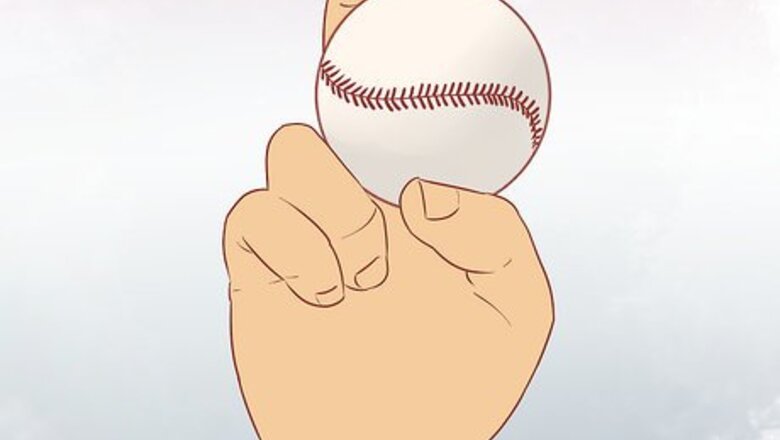
views
Developing Your Technique
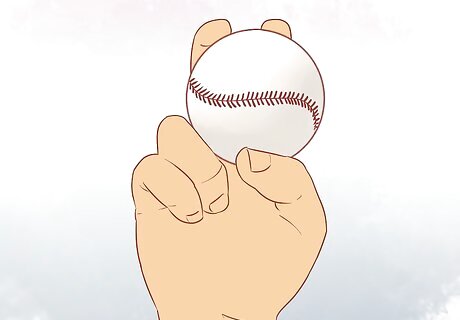
Perfect your grip. There are two primary grips for the fastball: the four-seam and the two-seam. The four-seam generally gathers more velocity but some pitchers find the two-seam more comfortable and easier to command. Many experienced pitchers will switch between the two options when they want to emphasize velocity or movement respectively but you should stick with one until you’re fully comfortable with it. For the four-seam grip, place your index and middle fingers across the seams where they form a horse-shoe shape with a comfortable amount of space between them. Have your ring and pinky fingers close together and your thumb gently resting underneath the ball. The two-seam grip involves the same general configuration of your fingers but with the index and middle finger following along the seams where they are close together. Once you’ve mastered the two-seam grip, your fastball should have some movement toward your pitching hand’s side of the plate (i.e. a right handed pitcher’s two-seam fastball with break inside on a right-handed hitter).
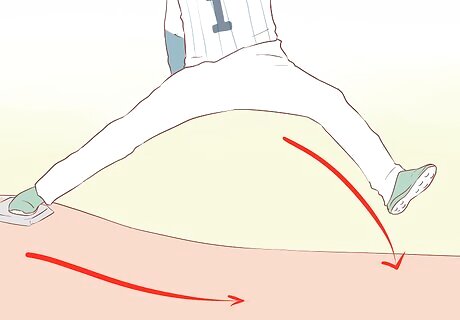
Perfect your stride. You should be generating the majority of your power from your lunging motion toward the plate. The pitching mound is elevated for a reason. After you lift your step leg, use the momentum of your body falling forward to generate power for your pitch. Determine the ideal spot for your step foot to land so that you’re maximizing your forward momentum without overextending. Practice hitting that spot with your foot until it’s second nature. You may even want to practice your lunge motion without actually pitching the ball so you can focus on it.
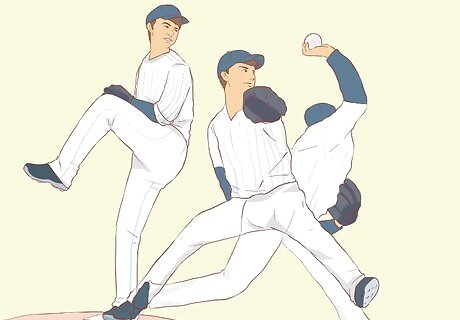
Follow through with your motion. If you rigidly stop your pitching motion as soon as you release the ball, you’ll lose some velocity and accuracy. Your pitching hand should end up near your hip on the opposite side of your body.
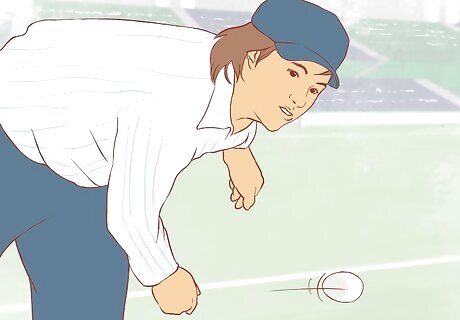
Command the pitch, don’t aim. One of the most ubiquitous and confusing pieces of advice you’ll hear from baseball coaches is that you shouldn’t aim your pitches. This is not meant to imply that you shouldn’t care about where your pitch lands. However, if you’re overly focused on guiding the pitch to a specific spot in the zone, it will compromise the velocity and general effectiveness of the pitch. Pitchers use the term ‘command’ to describe the approach of using your delivery motion to locate pitches rather than simply aiming the ball. This may sound vague if you’re new to pitching but will make more sense as you work on your technique. Point your step foot toward the inner or outer part of the plate when you’re trying to command the ball to those locations. As you’re developing your delivery, visualize the ball landing in a specific spot and keep practicing until it works. Use the muscle memory of that delivery motion to build your command. Commanding without aiming is one of the more difficult aspects of pitching and even major leaguers can struggle with it. You’ll need a lot of patience and practice.
Building Arm Strength
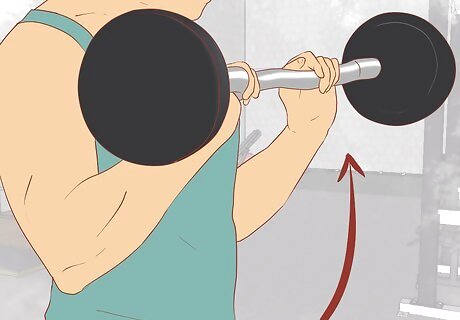
Focus on your triceps and forearm muscles. While most people associate biceps with arm strength, the most important pitching muscles in your arm are actually the flexor muscles in your forearm and your triceps. Focus on strength-building and flexibility exercises in these areas to build pitching velocity and reduce the risk of injury. Try some reverse barbell curls. Face away from the barbell and grip it with both hands shoulder-length apart from behind your back. Bend your elbows slightly and let your wrists do the work when you curl the barbell up toward your back. Start with a light-weight barbell and a limited number of repetitions before until you’re comfortable increasing. This will build forearm and wrist strength. Try some tricep extensions. You’ll need a cable pulley which is available at most commercial gyms. Grip the rope or handle-bar attachment in front of you and pull it down with your elbows ending up straightened and by your sides. Raise your hands back to the starting position slowly. Start with a light-weight pulley and a small number of repetitions until you’re comfortable increasing.
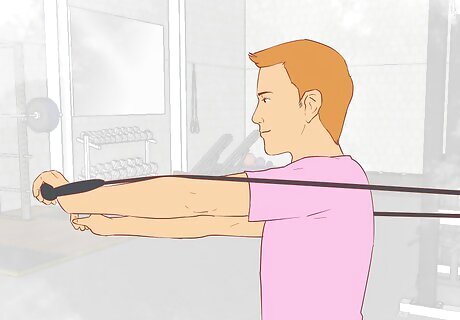
Build rotator cuff flexibility. The majority of pitching injuries take place in the shoulder region so building strength and flexibility in this area is essential as you try to ramp up your fastball velocity. Try some shoulder flexions. You’ll need some anchored tubing which is available at most commercial gyms. Stand facing away from the anchor with the tubing in your hands resting at your sides. Extend your arms out in front of your face with your elbows and wrists straight and then return to your starting position. Start with a limited number of repetitions until you’re comfortable increasing.
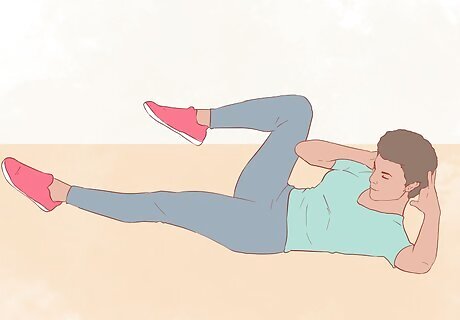
Strengthen your core. Your arms aren’t the only part of your body you work when pitching. A lot of your power will be derived from your legs, hips and abdomen. Strengthen these areas, collectively known as your ‘core,’ to maximize your pitching ability. Try some medicine ball rotational throws. You’ll need a medicine ball and a workout partner. Sit on the floor and hold the ball close to your chest with your elbows pointing outward. Keep your legs and lower body still during the exercise and start with your upper body rotated away from your partner. Rotate toward your partner and pass the ball by extending both elbows forward like a basketball pass. Start with a light-weight ball and a limited number of repetitions until you’re comfortable increasing. Try some bicycle crunches. Lay flat on your back with one leg out and both hands on your head. Crunch your opposite knee into your opposite elbow. Start with slow movements and limited repetitions until you’re comfortable increasing.















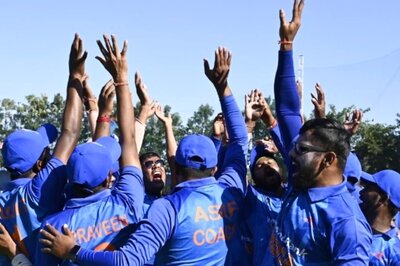




Comments
0 comment